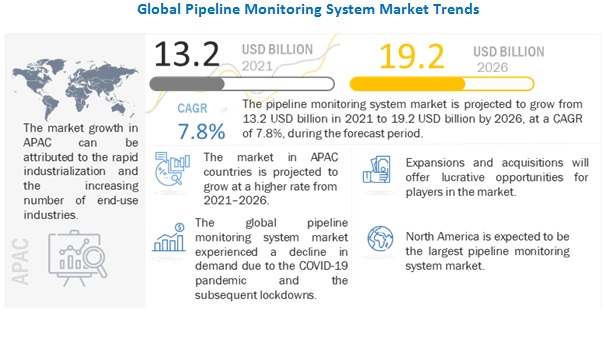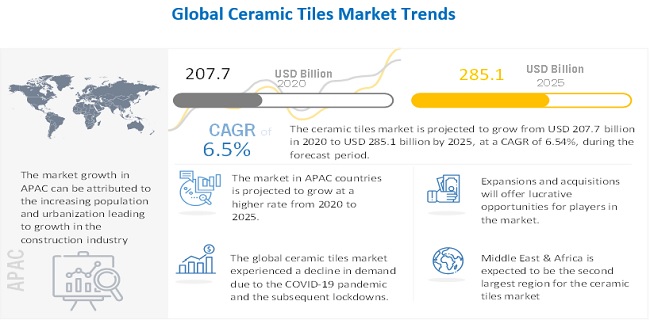
The global pipeline monitoring system market size is projected to grow from USD 13.2 billion in 2021 to USD 19.2 billion by 2026, at a CAGR of 7.8% from 2021 to 2026. The pipeline monitoring systems market is expected to witness high growth as a result of increased number of oil & gas leakages in production, pipelines, and storage tanks due to natural disasters and high pressure along with stringent government regulations for pipeline safety and security and expansion and upgradation of pipelines. The growth in trend of the development of new devices and solutions to monitor the pipeline performance, optimize the resources, automate the functions, and safeguard the operations fuels the growth of pipeline monitoring systems.
To know about the assumptions considered for the study download the pdf brochure
In terms of value, the metallic pipes segment is estimated to lead the pipeline monitoring system market in 2020.
The metallic pipes segment accounted for the largest market share in the pipeline monitoring system market. Ductile iron pipes, stainless steel pipes, aluminum pipes, and other types, such as cast-iron pipes, corrugated pipes, and copper pipes, are considered under metallic pipes. Iron-based pipes may get corrosive when treated with highly oxygenated water steam; thus, metallic pipes made with steel have a higher demand from the end-user industries. Metallic pipes are also more conducive to heat and less corrosion-resistant than non-metallic pipes.
In terms of value, leak detection is estimated to be the fastest-growing segment in the pipeline monitoring system market.
The leak detection segment is expected to grow at the highest CAGR from 2021 to 2026. This could be attributed to the increasing focus on improving the control over pipeline infrastructure and automating the process to improve productivity, which would enable the monitoring of the conditions of assets and raise an alarm in case of unauthorized events. One of the major reason of leak detection application to grow includes, increase in investments from oil & gas companies in pipeline monitoring infrastructures and safe transportation of the material through it.
The APAC region is projected to be the fastest-growing region in the pipeline monitoring system market during the forecast period.
The APAC region is projected to be the fastest-growing region in the pipeline monitoring system market in terms of both value and volume from 2021 to 2026. This region is witnessing the highest growth rate due to the rapid economic expansion. According to the IMF, China and India are among the fastest-growing economies globally. India is expected to overtake China with the highest growth rate, thus driving the global economy. The expansion of existing pipelines and development of new ones increased incidents of oil and gas leakages in pipelines and storage tanks at production facilities, and formulation of stringent regulations by the governments for the implementation of leak detection technologies and systems in different countries of APAC, and rapidly growing industrial sectors are expected to drive the market in APAC.
Siemens AG (US), Honeywell International Inc. (US), Huawei Technologies Co. Ltd. (China), BAE Systems (UK), and TransCanada PipeLines Limited (Canada), amongst others, are the key players operating in the pipeline monitoring system market.
Request for Sample Report: https://www.marketsandmarkets.com/requestsampleNew.asp?id=138709351








